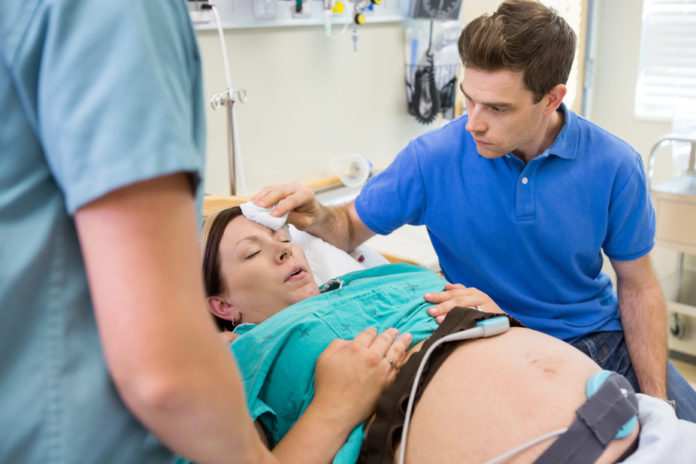
Joan Taylor, De Montfort University
Last week, a British diabetic women became the world’s first to complete a natural vaginal birth using an artificial pancreas. This news is a big step forward for all mothers with diabetes.
Pregnancy is riskier for women with diabetes of all types. Maternal mortality, birth defect rates, miscarriages and still births are greater than in the healthy population, as is the tendency for delivery difficulties for babies with a higher birth weight.
Diabetes covers a range of conditions where certain cells cannot absorb enough glucose from the blood. In type 1 diabetes, this occurs because of problems with a patient’s pancreatic production of insulin, the chemical that enables the absorption. In type 2, it is because muscle cells cannot receive the insulin signal.
Diabetes means a patient’s blood glucose levels can easily become too high. This in turn leads to faults in the way the body uses hormones to send signals to different organs. This problem is what causes the higher risk of complications in pregnant diabetic women.
Even though we understand the need to monitor diabetic mothers throughout, after – and even before – their pregnancies, these relatively poor outcomes of pregnancy and labour persist. Women’s insulin levels are often carefully adjusted to cope with the changes in weight, mobility and nutritional needs that come with pregnancy, but this reflects only a small part of the challenge.
Dangers of pregnancy
The advent of continuous glucose monitoring systems has revealed just how often pregnant diabetic women’s blood glucose levels fluctuate dangerously. This is the case even with careful management using insulin pumps, which create a more even administration than injections. Plus the personal discomfort, sleep interruption and false alarms that can come from using continuous glucose monitors make it harder to ensure patients use them to manage the condition correctly.
The actual birth is even more of a challenge because of the greater chance for disaster. Withstanding and maintaining effective contractions in order to give birth requires large amounts of energy. That creates greater pressure for adequate blood glucose and insulin levels.

University of Cambridge
Glucose levels are typically maintained during the birth through an intravenous glucose infusion and a manually adjustable dose of insulin. The insulin makes sure that the mother’s cells can absorb enough glucose, which in turn prevents the baby’s blood sugar levels from dropping to potentially fatal levels (neonatal hypoglycaemia).
After delivery, the insulin requirement drops sharply and clinical staff must be careful not to give the mother too much and reduce her blood sugar to a dangerous level (maternal hypoglycaemia). This risk develops soon after contractions have ended, especially if the mother quickly begins breastfeeding and if medication given to her for labour prevents her from recognising the symptoms of hypoglycaemia.
With all these complications, it is small wonder that diabetic women are often advised to opt for caesarean sections, although these carry their own post-operative risks as nutrition and mobility are again impaired.
Automating care
The advent of the artificial pancreas has the potential to change this. The technology uses a sensor embedded beneath the skin to determine blood glucose levels and trends and passes that information to the clinical staff. An external electronic device then uses an algorithm to decide how much insulin is needed and administers it using a pump.
Because the glucose readings come from tissue fluid, they only approximate blood sugar levels and can be inaccurate if the levels are changing quickly. Many of the artificial pancreas algorithms used recently in research could cope with making automatic adjustments to the insulin pump output but would not yet be trusted to do so in all circumstances.
In critical care, including labour, some manual input for the artificial pancreas will still be important for safety. But eventually the technology will become fully automatic and should greatly reduce the present tragedies in maternity diabetes.
A fully internalised bionic pancreas is much further away – but whether biological, electronic, chemical or even mechanical, this will eventually solve the diabetes problem. Meanwhile the reported case of the first natural birth with the artificial pancreas in Norwich represents a triumph.
![]()
Joan Taylor is Professor of Pharmaceutics at De Montfort University.
This article was originally published on The Conversation.
Read the original article.




















